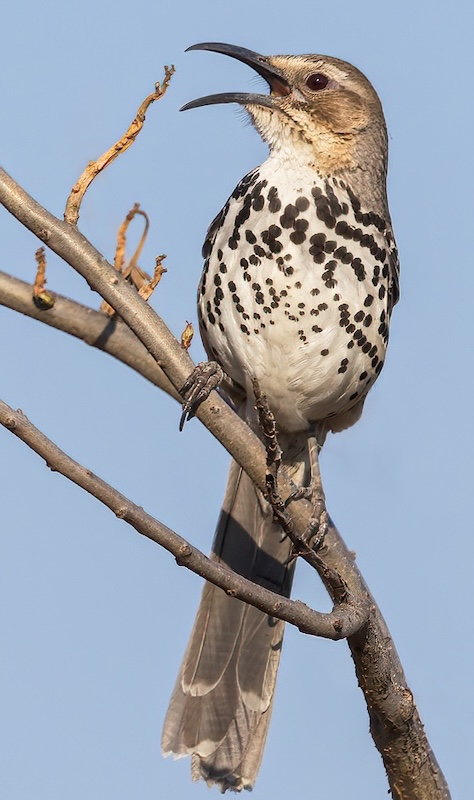Mimidae – Mockingbirds & Thrashers
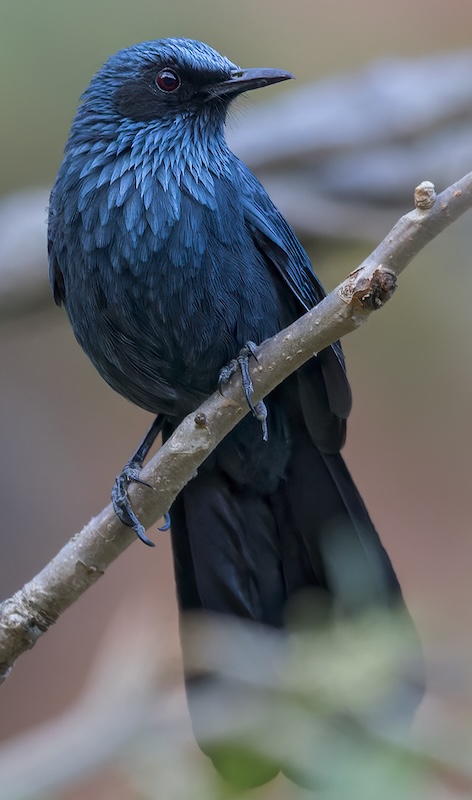
The Mimidae are the New World family of passerine birds that includes thrashers, mockingbirds, tremblers, and the New World catbirds.
As their name (Latin for ‘mimic’) suggests, these birds are notable for their vocalisation, especially some species’ remarkable ability to mimic a wide variety of birds and other sounds heard outdoors. They tend to sing their throaty, whistling songs from exposed perches. They mostly mimic other birds but similar sounds, such as frog vocalisations are also often heard. Some even mimic mechanical sounds such as cell phone alerts and vehicle reversing alarms.
There are thirty-five species of mimids in two large and eight small or monotypic genera. They tend towards dull greys and browns in their appearance, though a few are black or blue-grey, and many have red, yellow, or white irises. They range from 20 to 33 centimetres in length, and 36 to 56 grams in weight. Many mimids have a rather thrush-like pattern: brown above, pale with dark streaks or spots below. They tend to have longer tails than thrushes (or the bigger wrens, which they also resemble) and longer bills that in many species curve downward.
|
|
|
|
Long-billed Thrasher Toxostoma longirostre |
Ocellated Thrasher Toxostoma ocellatum |
|
All Photos on this page courtesy of ©Dubi Shapiro |
|
They have long, strong legs (for passerines) with which many species hop through undergrowth searching for arthropods and fruits to eat. Their habitat varies from forest undergrowth to scrub, high-altitude grasslands, and deserts. The two tremblers live in the atypical habitat of rain forests in the Lesser Antilles, and the brown trembler has the particularly atypical behaviour of foraging while clinging to tree trunks. They have a range as far north as southern Canada (in the summer) right down to the southern tip of South America.
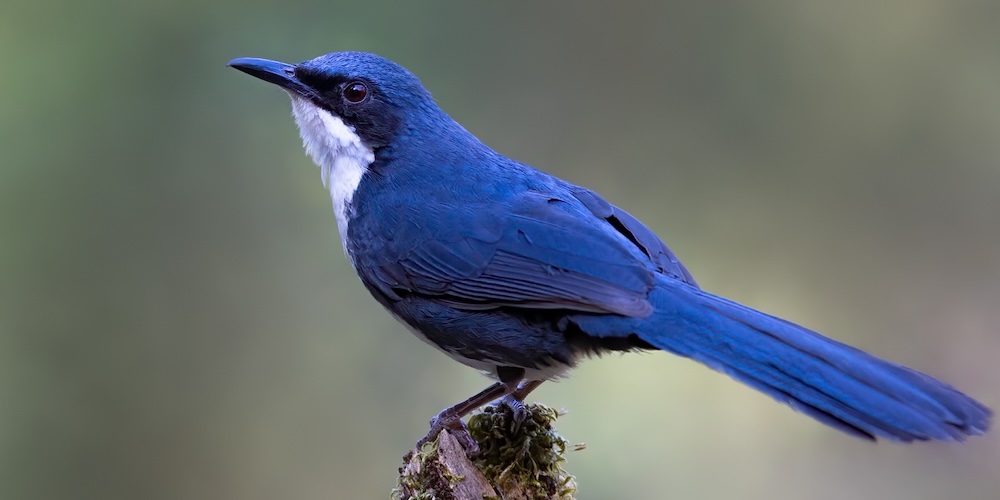
Blue-and-white Mockingbird Melanotis hypoleucus
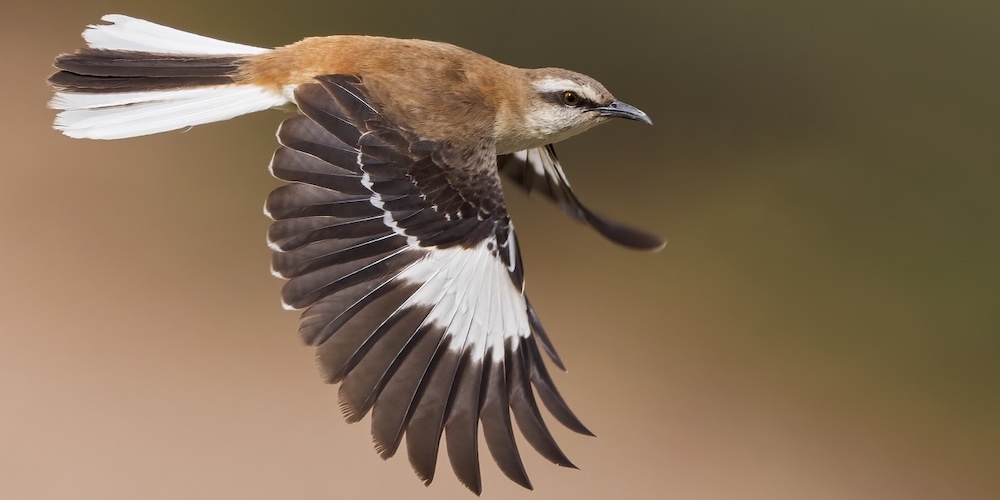
Brown-backed Mockingbird Mimus dorsalis
All known species build somewhat messy, bulky twig nests in dense growth, in most species on the ground or no more than 2 meters up. They usually lay 2 to 5 eggs that hatch in 12 or 13 days, which is also the length of time the chicks stay in the nest. Breeding usually starts in the spring or early in the rainy season, and many species can have two or even three broods per year. Most failures to fledge young are due to predation. Pairs often stay together for more than one breeding season.
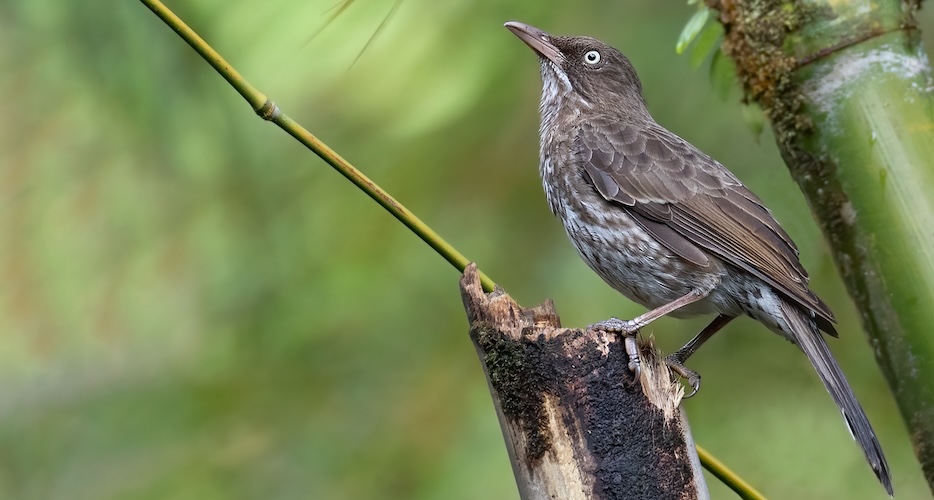
Pearly-eyed Thrasher Margarops fuscatus
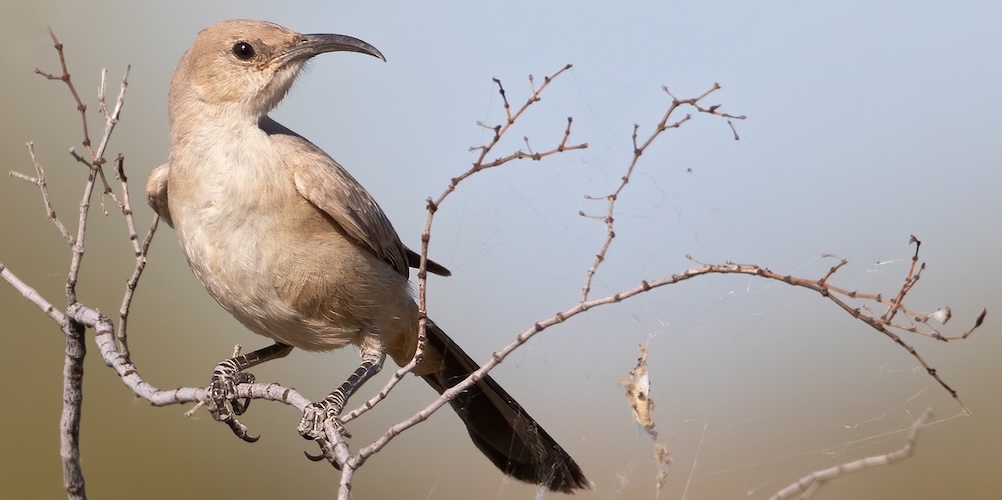
Le Conte’s Thrasher Toxostoma lecontei
Southern north America and central America and the Caribbean have the greatest variety of species. The mockingbirds of the Galapagos are like no others, having radiated into several species that are fearless, cooperatively breeding, flock-living, roving opportunists.
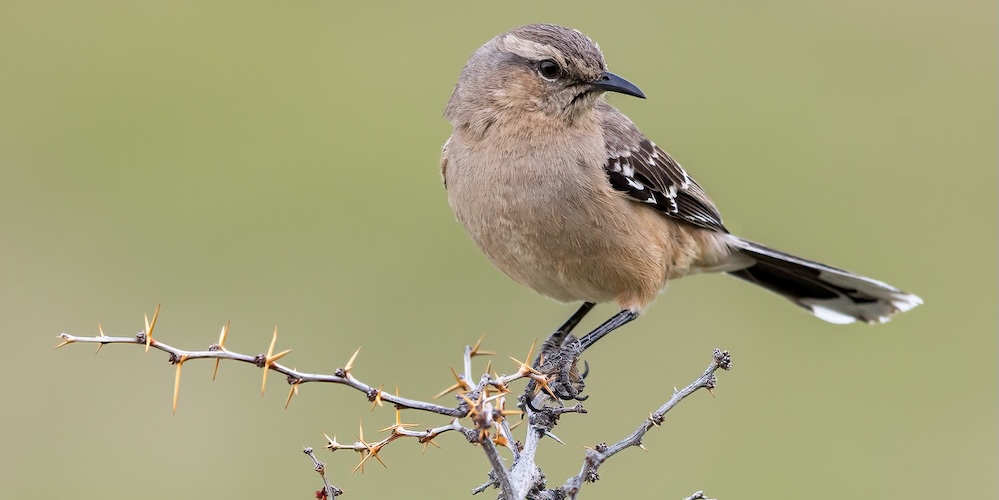
Patagonian Mockingbird Mimus patagonicus

Northern Mockingbird Mimus polyglottos
-
Number of bird species: 35
(As at October 2025)
According to the recently (2025) amalgamated AviList, there are thirty-five Species in ten genera, in the Mimidae family, all exclusive to the New World; both the Western Nearctic and Neotropical zones. They are:
Blue-and-white Mockingbird Melanotis hypoleucus
Blue Mockingbird Melanotis caerulescens
Black Catbird Melanoptila glabrirostris
Grey Catbird Dumetella carolinensis
Martinique Thrasher Ramphocinclus brachyurus
St Lucia Thrasher Ramphocinclus sanctaeluciae
Scaly-breasted Thrasher Allenia fusca
Pearly-eyed Thrasher Margarops fuscatus
Grey Trembler Cinclocerthia gutturalis
Brown Trembler Cinclocerthia ruficauda
Curve-billed Thrasher Toxostoma curvirostre
Ocellated Thrasher Toxostoma ocellatum
Brown Thrasher Toxostoma rufum
Long-billed Thrasher Toxostoma longirostre
Cozumel Thrasher Toxostoma guttatum
Bendire’s Thrasher Toxostoma bendirei
Grey Thrasher Toxostoma cinereum
California Thrasher Toxostoma redivivum
Le Conte’s Thrasher Toxostoma lecontei
Crissal Thrasher Toxostoma crissale
Sage Thrasher Oreoscoptes montanus
Chilean Mockingbird Mimus thenca
Patagonian Mockingbird Mimus patagonicus
Chalk-browed Mockingbird Mimus saturninus
White-banded Mockingbird Mimus triurus
Brown-backed Mockingbird Mimus dorsalis
Bahama Mockingbird Mimus gundlachii
Galapagos Mockingbird Mimus parvulus
Floreana Mockingbird Mimus trifasciatus
Hood Mockingbird Mimus macdonaldi
San Cristobal Mockingbird Mimus melanotis
Long-tailed Mockingbird Mimus longicaudatus
Socorro Mockingbird Mimus graysoni
Tropical Mockingbird Mimus gilvus
Northern Mockingbird Mimus polyglottos
-
Mimidae
Family AccountThese long-tailed songsters are common denizens of the open habitats of the New World, reaching their greatest diversity in the thrasher radiation of southwestern North America. -
Mimidae
Family AccountThe mimids are the New World family of passerine birds, Mimidae, that includes thrashers, mockingbirds, tremblers, and the New World catbirds.
Given the number of species in this family, Fatbirder does not provide quick links to all of them. However, the entries below do include links to representatives of every genera, all those illustrated and some of the most often encountered, iconic or sought-after species.
-
Black Catbird Melanoptila glabrirostris
Species AccountThe black catbird (Melanoptila glabrirostris) is a songbird species in the monotypic genus Melanoptila, part of the family Mimidae. At 19–20.5 cm (7.5–8 in) in length and 31.6–42 g (1.1–1.5 oz) in mass, it is the smallest of the mimids. Sexes appear similar, with glossy black plumage, black legs and bill, and dark brownish eyes. -
Black Catbird Melanoptila glabrirostris
Species AccountThis species has a very small range which is shrinking as its habitat is cleared for resort development and coconut plantations. -
Black Catbird Melanoptila glabrirostris
Species AccountSound archive and distribution map. -
Blue Mockingbird Melanotis caerulescens
Species AccountThe blue mockingbird (Melanotis caerulescens) is a species of bird in the Mimidae family. It is endemic to Mexico, but has occurred as a vagrant in the southern United States. Its natural habitats are subtropical or tropical dry forests, subtropical or tropical moist montane forests, and heavily degraded former forest. -
Blue Mockingbird Melanotis caerulescens
Cornell Species AccountUnlike most members of its family, Blue Mockingbird inhabits dense thickets and it's a lucky birder who observes one singing from an exposed perch. -
Blue Mockingbird Melanotis caerulescens
Species AccountSound archive and distribution map. -
Blue-and-white Mockingbird Melanotis hypoleucus
Species AccountSkulking and heard far more often than seen, this fairly large and ample-tailed songbird replaces Blue Mockingbird in highlands and foothills south of... -
Blue-and-white Mockingbird Melanotis hypoleucus
Species AccountSound archive and distribution map. -
Brown Thrasher Toxostoma rufum
Species AccountThe only thrasher in most of eastern North America. Fairly large and very long-tailed, with bright rufous upperparts and heavily streaked underparts. -
Brown Thrasher Toxostoma rufum
Species AccountThe brown thrasher (Toxostoma rufum) is a bird in the family Mimidae, which also includes the New World catbirds and mockingbirds. The dispersal of the brown thrasher is abundant throughout the eastern and central United States, southern and central Canada, and is the only thrasher to live primarily east of the Rockies and central Texas. It is the state bird of Georgia. -
Brown Thrasher Toxostoma rufum
Species AccountSound archive and distribution map. -
Brown Trembler Cinclocerthia ruficauda
Species AccountA bright-eyed, hefty billed bird of forests and scrublands. Tends to hold its tail cocked up and wings drooped, especially when feeding. -
Brown Trembler Cinclocerthia ruficauda
Species AccountSound archive and distribution map. -
Brown-backed Mockingbird Mimus dorsalis
Species AccountThe brown-backed mockingbird (Mimus dorsalis) is a species of bird in the family Mimidae. It is found in Argentina and Bolivia. -
Brown-backed Mockingbird Mimus dorsalis
Species AccountSound archive and distribution map. -
Chalk-browed Mockingbird Mimus saturninus
Species AccountLarge mockingbird found in a variety of open non-forest habitats including urban areas. Brownish-gray above and pale below with a white-tipped tail. -
Chalk-browed Mockingbird Mimus saturninus
Species AccountThe chalk-browed mockingbird (Mimus saturninus) is a bird found in most of Brazil, and parts of Bolivia, Uruguay, Paraguay, Argentina, and Suriname. -
Chalk-browed Mockingbird Mimus saturninus
Species AccountThe chalk-browed mockingbird (Mimus saturninus) is a bird found in most of Brazil, and parts of Bolivia, Uruguay, Paraguay, Argentina, and Suriname. -
Chalk-browed Mockingbird Mimus saturninus
Species AccountThe global population size has not been quantified, but this species is described as 'common' (Stotz et al. (1996). -
Chalk-browed Mockingbird Mimus saturninus
Species AccountSound archive and distribution map. -
Gray Catbird Dumetella carolinensis
Species AccountThe gray catbird (Dumetella carolinensis), also spelled grey catbird, is a medium-sized North American and Central American perching bird of the mimid family. -
Gray Catbird Dumetella carolinensis
Species AccountIUCN species profile -
Gray Catbird Dumetella carolinensis
Species AccountSound archive and distribution map. -
Hood Mockingbird Nesomimus macdonaldi
Species AccountThe Hood mockingbird (Mimus macdonaldi) also known as the Española mockingbird is a species of bird in the Mimidae family. It is endemic to Española Island in the Galápagos Islands, Ecuador, and it is one of four closely related mockingbird species endemic to the Galápagos archipelago. -
Hood Mockingbird Nesomimus macdonaldi
Species AccountSound archive and distribution map. -
Le Conte's Thrasher Toxostoma lecontei
Species AccountThe palest thrasher; entirely light tan with whiter throat. Undertail coverts peach colored. Bill dark and strongly curved; eye dark. Found in dry flat deserts. -
Le Conte's Thrasher Toxostoma lecontei
Species AccountSound archive and distribution map. -
Long-billed Thrasher Toxostoma longirostre
Species AccountThe long-billed thrasher (Toxostoma longirostre) is a medium-sized resident songbird of South Texas and eastern Mexico. -
Long-billed Thrasher Toxostoma longirostre
Species AccountSound archive and distribution map. -
Long-tailed Mockingbird Mimus longicaudatus
Species AccountIt has a long tail, black markings on the face, and white wingbars. Juvenile has spots on the breast and a shorter tail. The only mockingbird within its range. -
Long-tailed Mockingbird Mimus longicaudatus
Species AccountThe long-tailed mockingbird (Mimus longicaudatus) is a species of bird in the Mimidae family. It is found in dry scrubland and woodland in western Ecuador. -
Long-tailed Mockingbird Mimus longicaudatus
Species AccountSound archive and distribution map. -
Martinique Thrasher Ramphocinclus brachyurus
Species AccountA ground-feeding denizen found very locally in wooded ravines and valleys with thick low vegetation. -
Martinique Thrasher Ramphocinclus brachyurus
Species AccountSound archive and distribution map. -
Northern Mockingbird Mimus polyglottos
Species AccountSound archive and distribution map. -
Northern Mockingbird Mimus polyglottos
Species AccountThe northern mockingbird (Mimus polyglottos) is the only mockingbird commonly found in North America. -
Northern Mockingbird Mimus polyglottos
Species AccountCommon and fairly widespread across much of North America and the Caribbean. Medium-sized songbird with a relatively long tail, small head, and short bill. -
Ocellated Thrasher Toxostoma ocellatum
Species AccountHandsome and uncommon thrasher of oak scrub, thickets, and brushy woodland; endemic to interior highlands of central Mexico. -
Ocellated Thrasher Toxostoma ocellatum
Species AccountSound archive and distribution map. -
Patagonian Mockingbird Mimus patagonicus
Species AccountThe Patagonian mockingbird (Mimus patagonicus) is a species of bird in the family Mimidae. It is found in much of Argentina and locally in Chile. -
Patagonian Mockingbird Mimus patagonicus
Species AccountSound archive and distribution map. -
Pearly-eyed Thrasher Margarops fuscatus
Species AccountThe pearly-eyed thrasher (Margarops fuscatus) is a bird in the thrasher family Mimidae. It is found on many Caribbean islands, from the Bahamas in the north... -
Pearly-eyed Thrasher Margarops fuscatus
Species AccountSound archive and distribution map. -
Sage Thrasher Oreoscoptes montanus
Species AccountThe smallest thrasher; crisp black streaking on underparts unlike most other western thrashers. Grayish brown with buffy wash on belly and sides and thin white wingbars... -
Sage Thrasher Oreoscoptes montanus
Species AccountSound archive and distribution map. -
Scaly-breasted Thrasher Allenia fusca
Species AccountThe scaly-breasted thrasher (Allenia fusca) is a species of bird in the family Mimidae. It is found throughout much of the Lesser Antilles of the Caribbean Sea. -
Scaly-breasted Thrasher Allenia fusca
Species AccountSound archive and distribution map.


